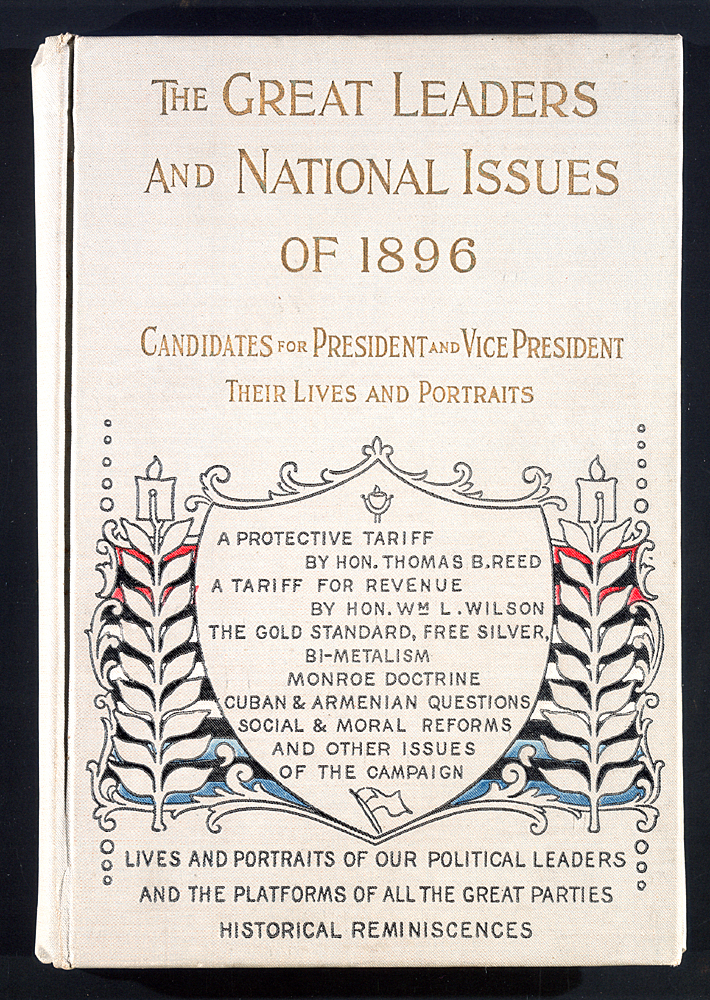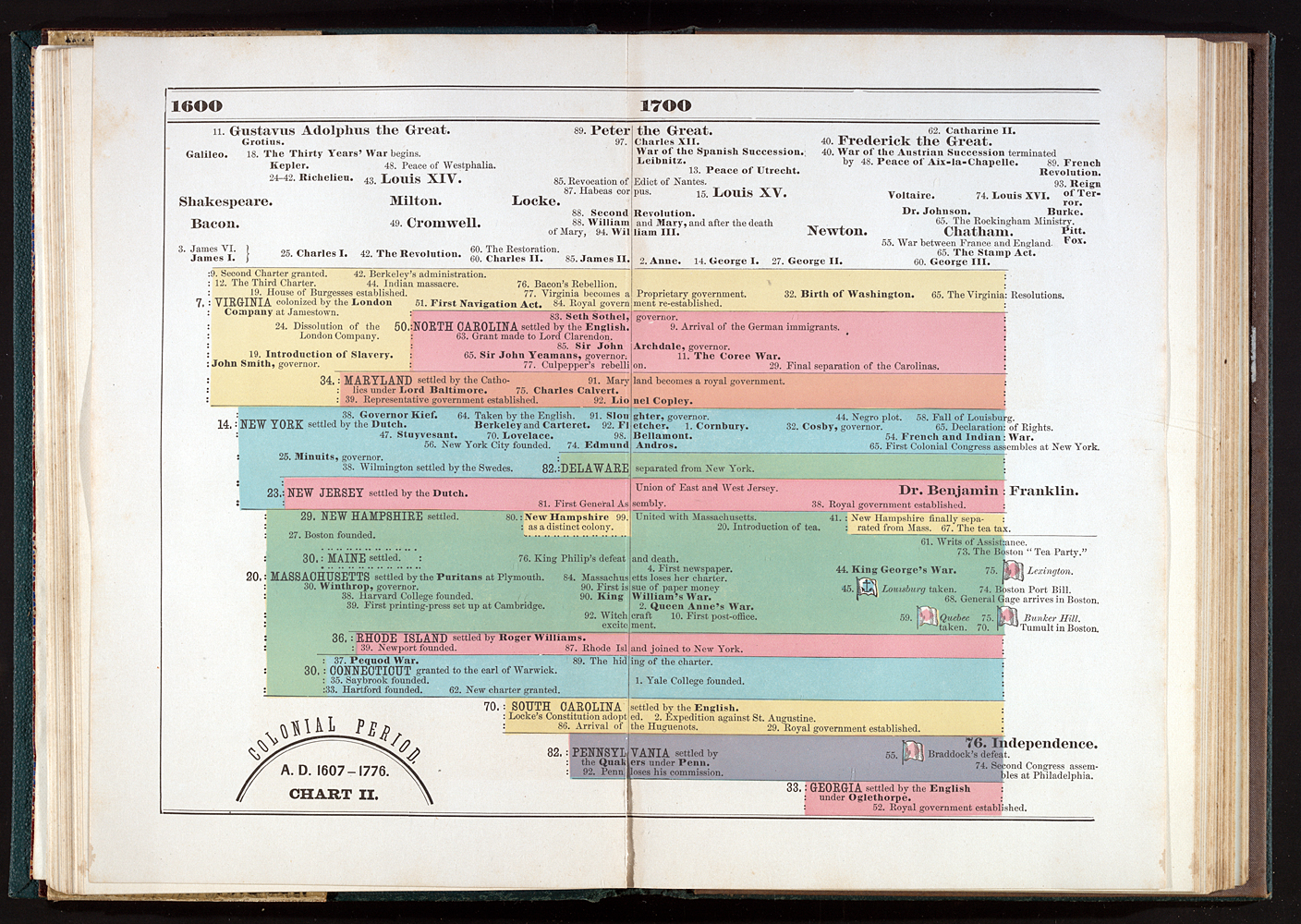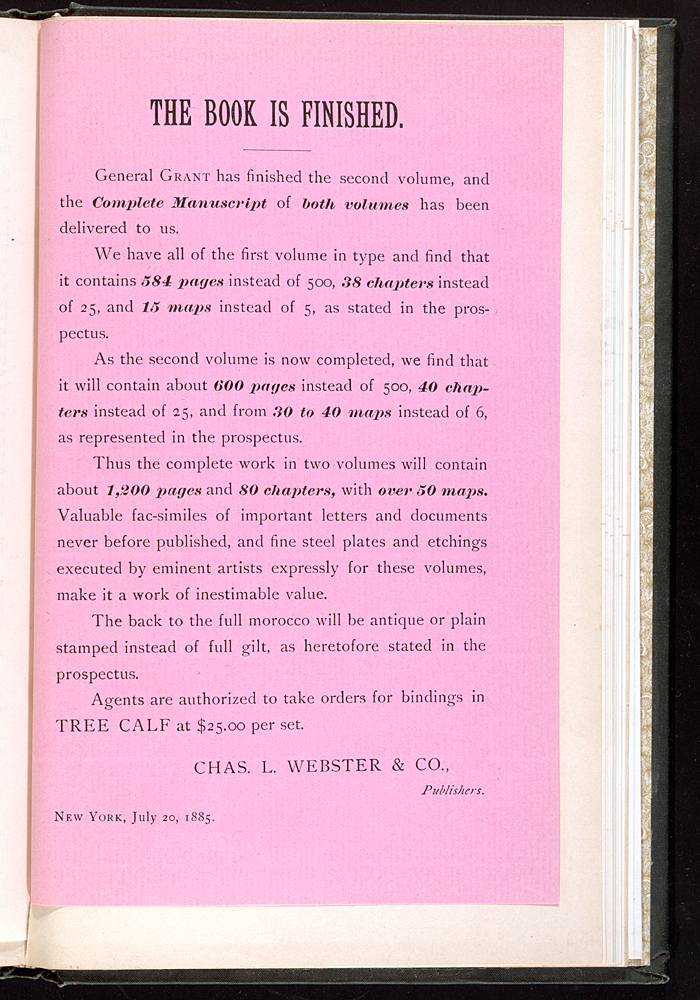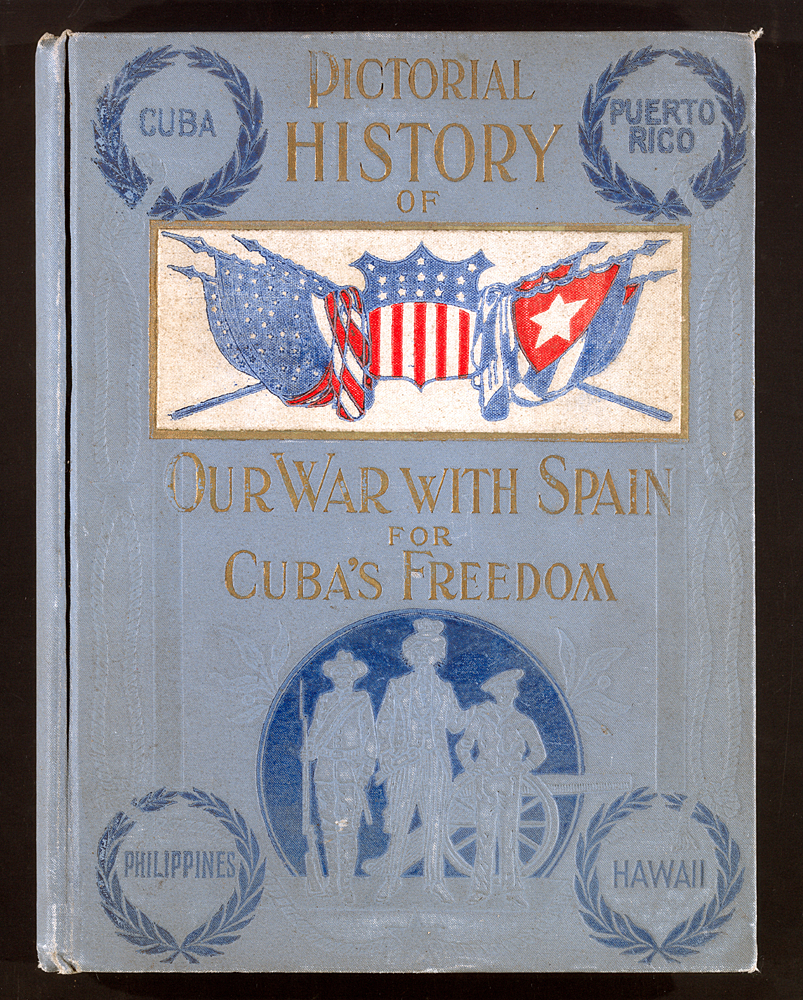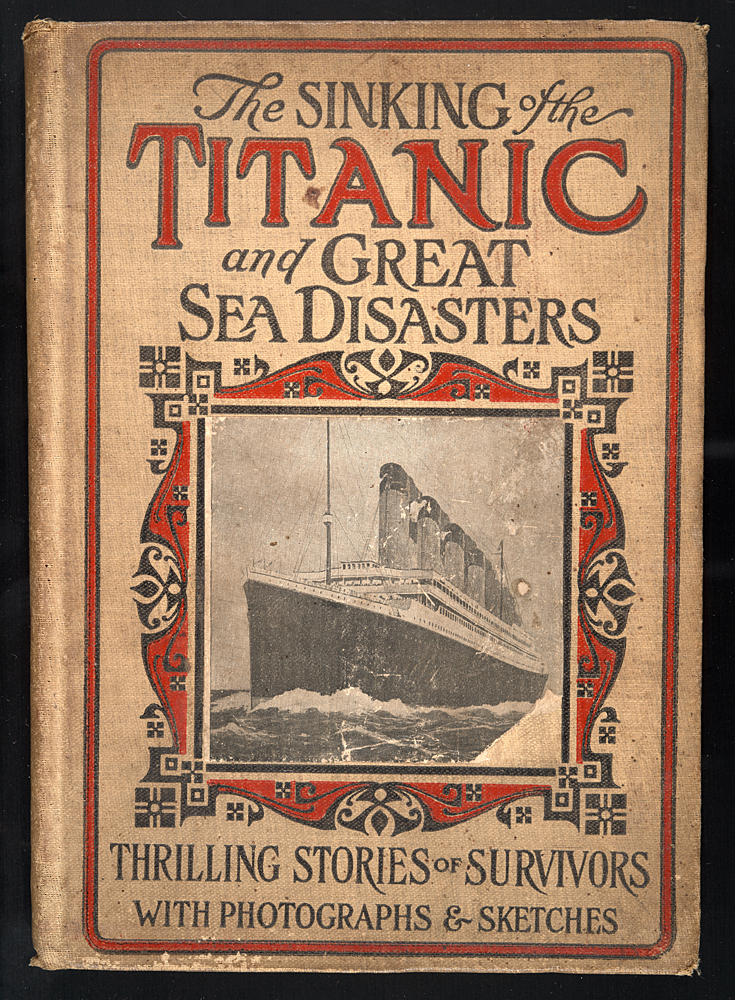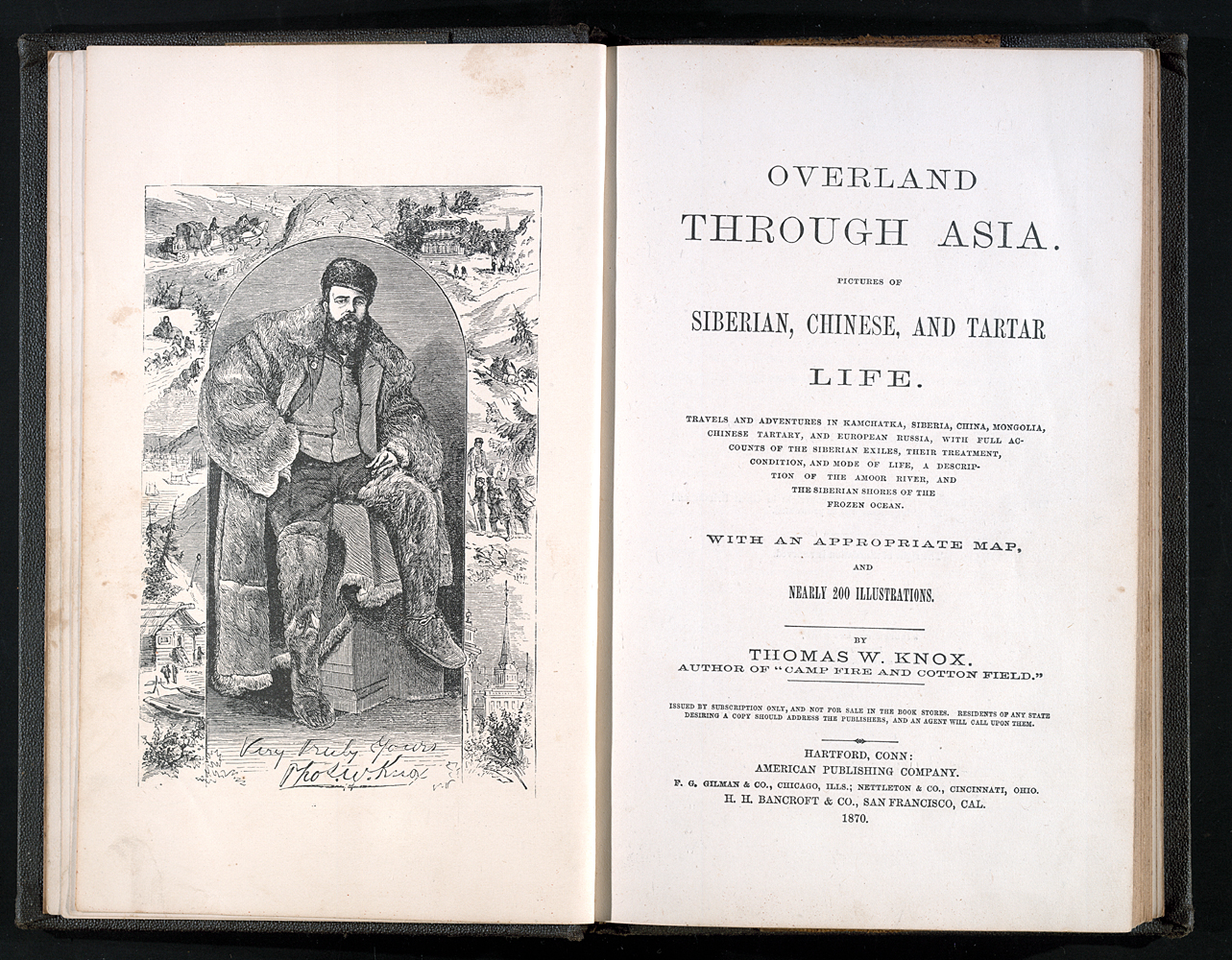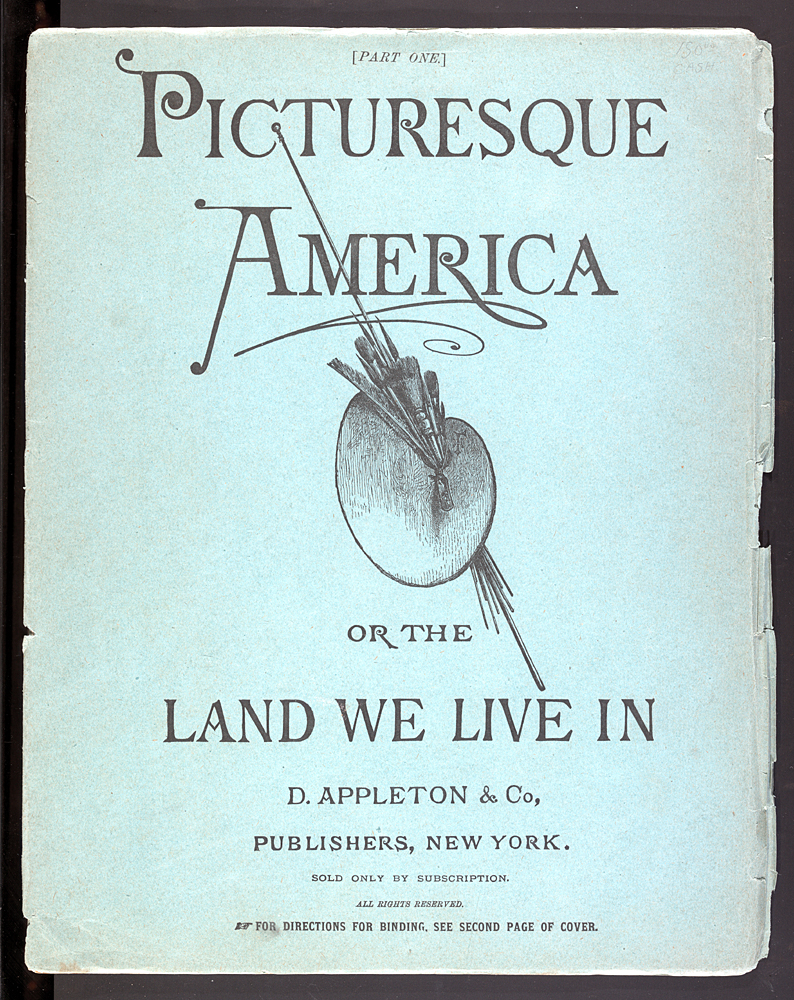Fig. 1: This election guide is for the 1896 elections, in which William McKinley, running against the eloquent William Jennings Bryan, became the first president since 1872 to receive a popular majority. Campaign biographies and election guides were published by subscription publishers for every presidential election from 1880-1912. The collection contains multiple examples-- sometimes as many as eight or ten--of most of these titles. Their proliferation shows that, while a subject was of current interest, publishers engaged in a brief but intense effort to profit from it.
Fig. 2: Histories were a popular subject for subscription publishers. This centennial history, one of many published in 1876 and 1877, contains numerous illustrations, color charts, and maps, and was surely sold as an essential addition to any American home. Its prospectus claimed that
"Never has there been published a book so rich in historical incident, so instructive in its method of presentation, and so brilliant and fascinating in its narrative; and never has there been a time, when it was so necessary that the American citizen should look back and trace the progress of his Country, from its early, humble beginnings, to its present proud position among the foremost nations of the World."
Fig. 3: One of the most spectacular of nineteenth-century American publishing ventures, Grant's Memoirs was published by Mark Twain, who had originally established The Charles L. Webster Company with his nephew Charles Webster in May 1884 as a more profitable venue for Twain to publish his own works. Twain persuaded a reluctant Grant, whose dire financial plight had forced him to write articles about his experiences forCentury Magazine, to publish his memoirs. He convinced Grant, who was dying of throat cancer, that his memoirs would provide for his family after his death-and Twain proved to be right. Thousands of veterans who fought under Grant did the canvassing and Twain had 60,000 orders for theMemoirs by May of 1885. In December of 1885, just months after Grant's death--Grant finished writing only days before his death on July 23--theMemoirs were published. By the following spring the work had already made a profit of $600,000. Booksellers were especially indignant that Grant's Memoirs should be sold by subscription rather than through the regular trade.
Fig. 4: Books about war have always been popular with subscription publishers. The Civil War, however, generated more widelycirculated subscription publications than any other American conflict. The range of topics included the memoirs of Grant, Lee, and others; accounts of battles; the contribution of women and African Americans to the war effort; background histories, general histories; constitutional issues; and Reconstruction. But the Spanish- American War (April-December 1898) was also an important war for subscription publishers. Publishers made a brief, focused effort in 1898 and 1899 to get out works on the war, catering to thencurrent feelings of "patriotism" and growing American imperialism. World War I was the last major war to be treated by the subscription publishing business.
Fig. 5: Disasters, man-made or natural, have been popular subjects for subscribers into the twentieth century. New disasters have always struck publishers as occasions to reap enormous profits by marketing "authoritative" accounts adorned by a multitude of drawings and photos. Canvassing books for these works were generally put together hastily, the works themselves usually being written even while they were being sold. This particular work, very much a period piece, was actually republished in 1998, almost certainly in response to the success of the film Titanic. Marshall Logan, a hack writer, wrote and edited many works for the subscription book business, including The True Story of Our National Calamity by Flood, Fire and Tornado and The Story of the Panama Canal.
Fig. 6: Numerous books on foreign travel and history, recounting tales of distant countries, their people and their customs, were sold by subscription. In this book, Knox relates his extensive trek across Asia, providing his readers with colorful anecdotes and lively illustrations calculated to pique interest in this exotic part of the world. Other works of this kind in the Zinman Collection include more than a dozen works on Stanley and Livingston which helped introduce Americans to the African continent. Such works were typically filled with illustrations for subscribers curious to see what the rest of the world looked like even if they couldn't see it for themselves. A few were simply largeformat plate books filled with images and little or no text. They functioned analogously to National Geographic in the middle of the twentieth century.
Fig. 7: Marjorie Stafford has noted that the first New York trade publisher to engage in subscription publishing was D. Appleton. The practice, which Appleton began in 1857 with the American Cyclopedia(intended for "personal house-tohouse canvass"), became increasingly popular. Bryant's Picturesque America was one of Appleton's great successes in this form. Originally issued and sold in parts--of which one is shown--the work was bound into a two volume set upon its completion in 1872. Touted as "the most magnificent illustrated work ever published," it contained hundreds of woodcuts and steel engravings by leading artists and craftsmen of the period. The work cost Appleton nearly $250,000 to produce, and sold nearly a million copies. Its success led to other similar works, Picturesque Europe andPicturesque Palestine, and to imitations by other publishers.
